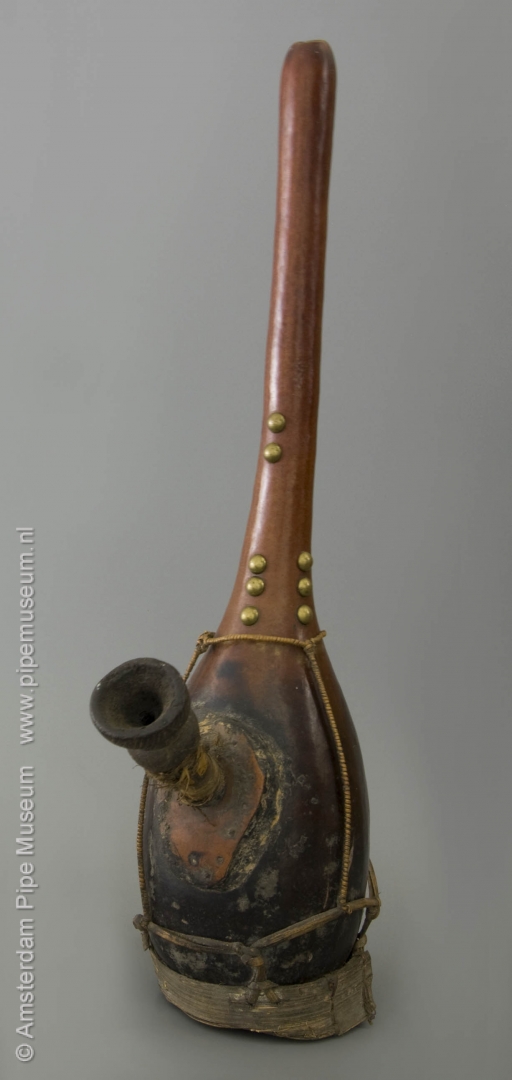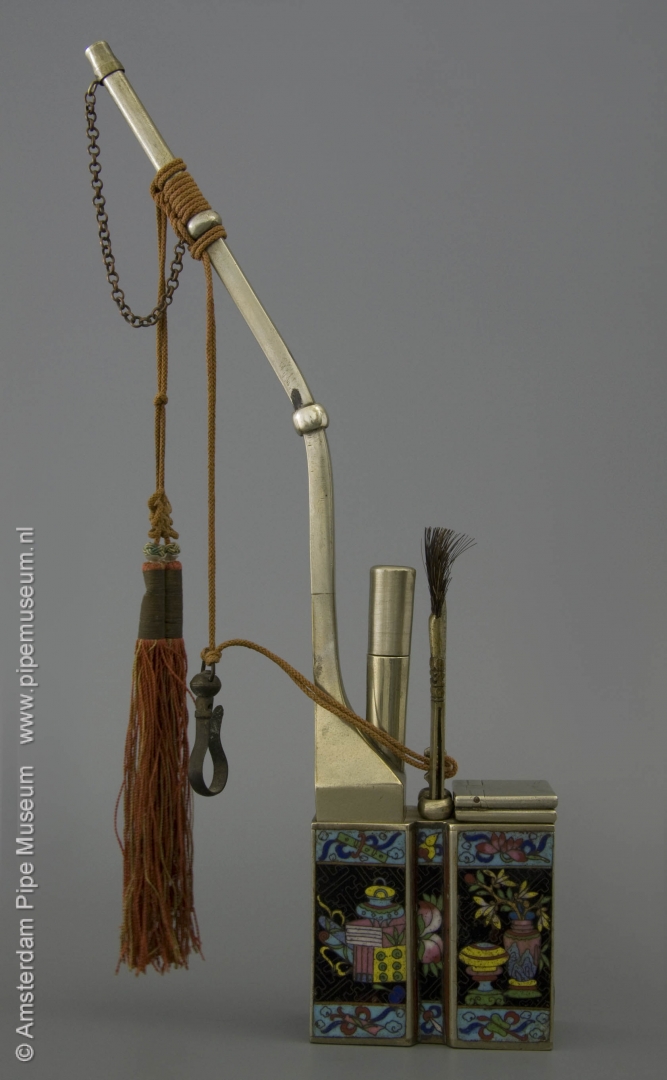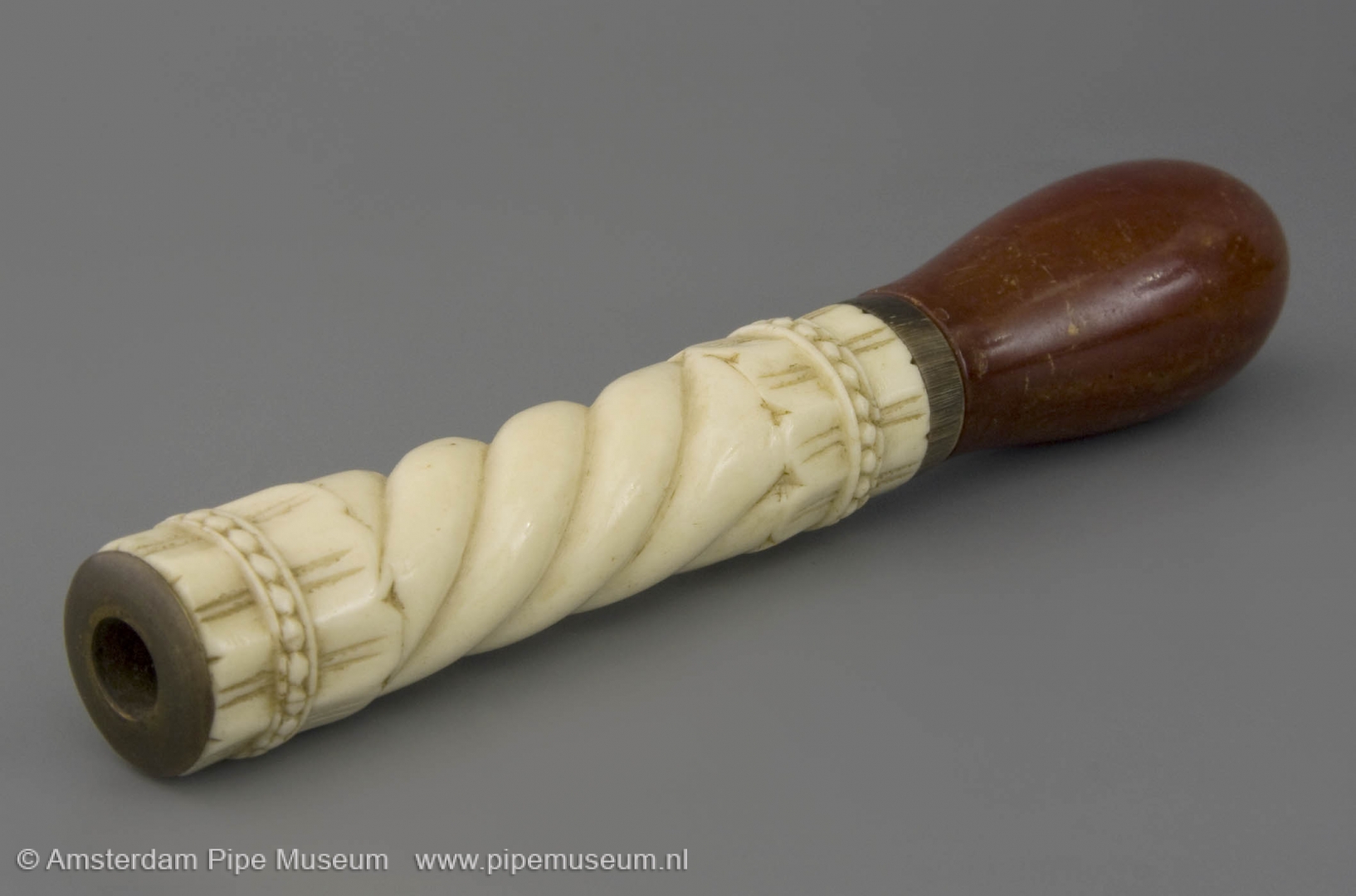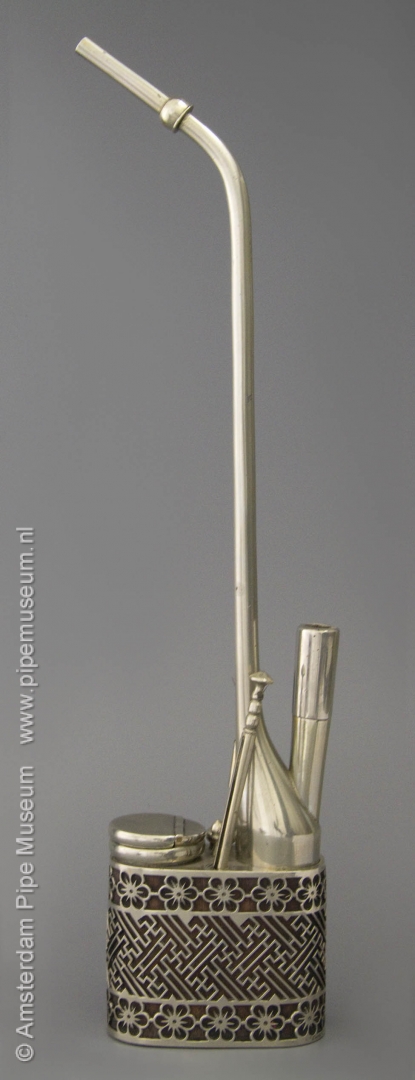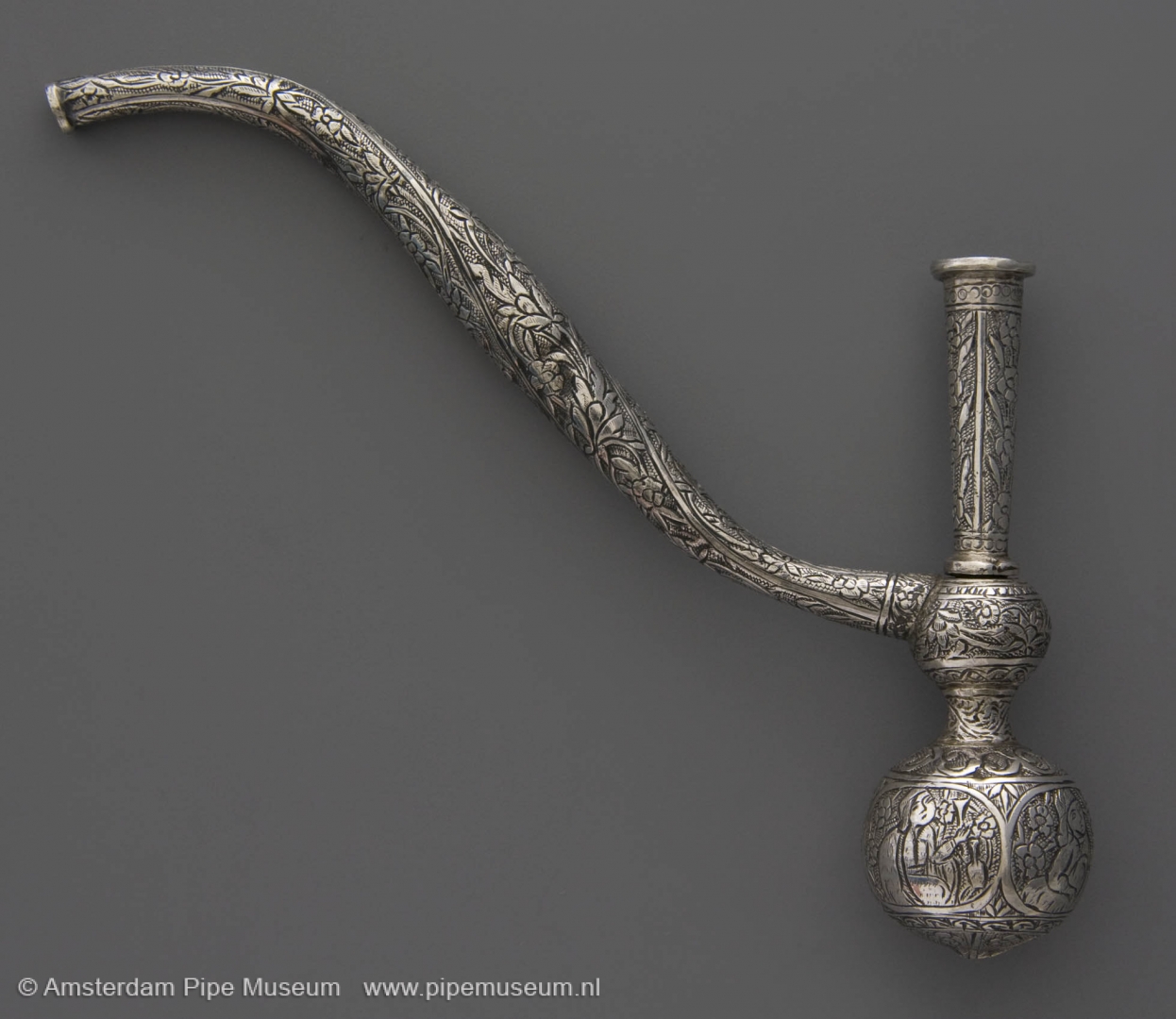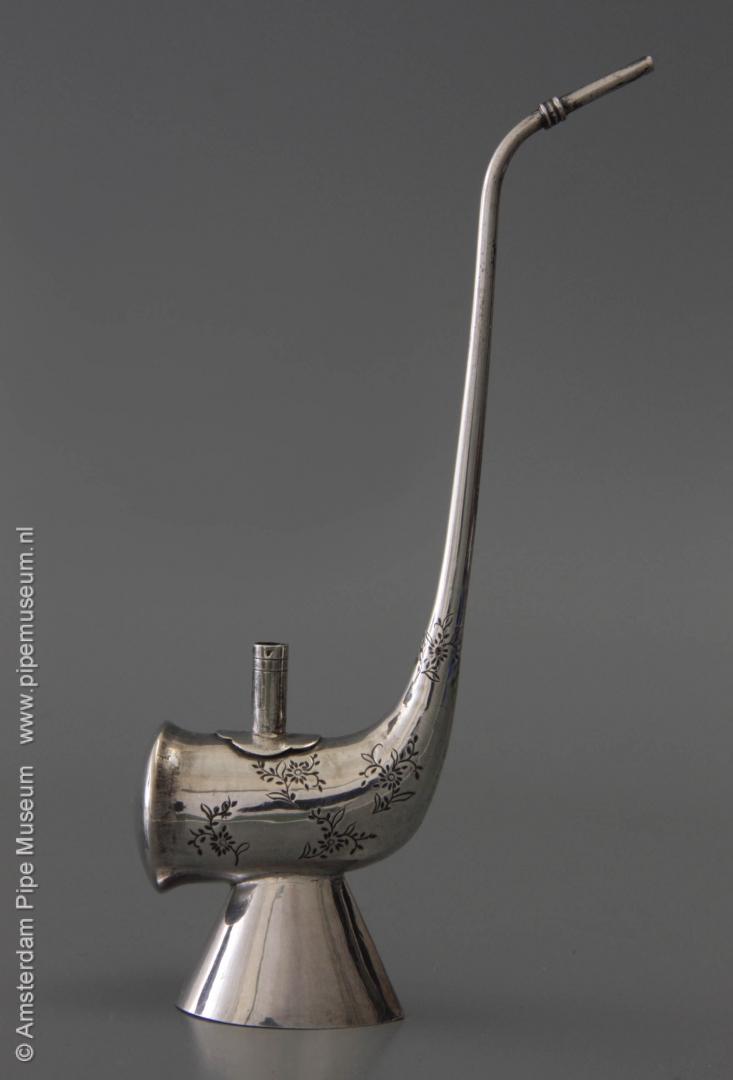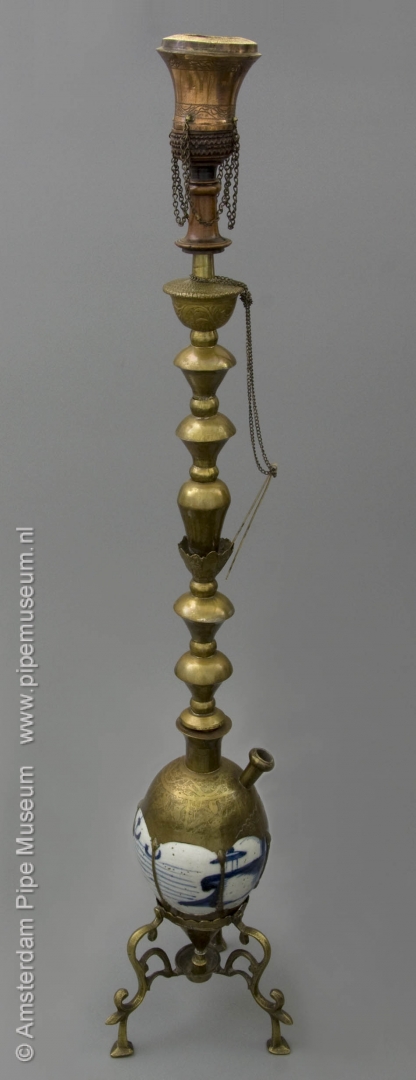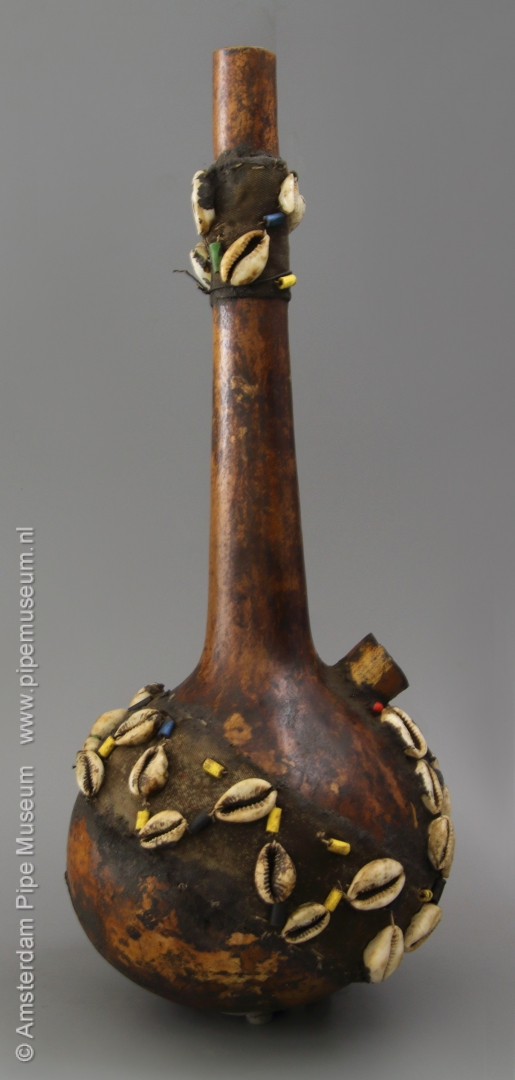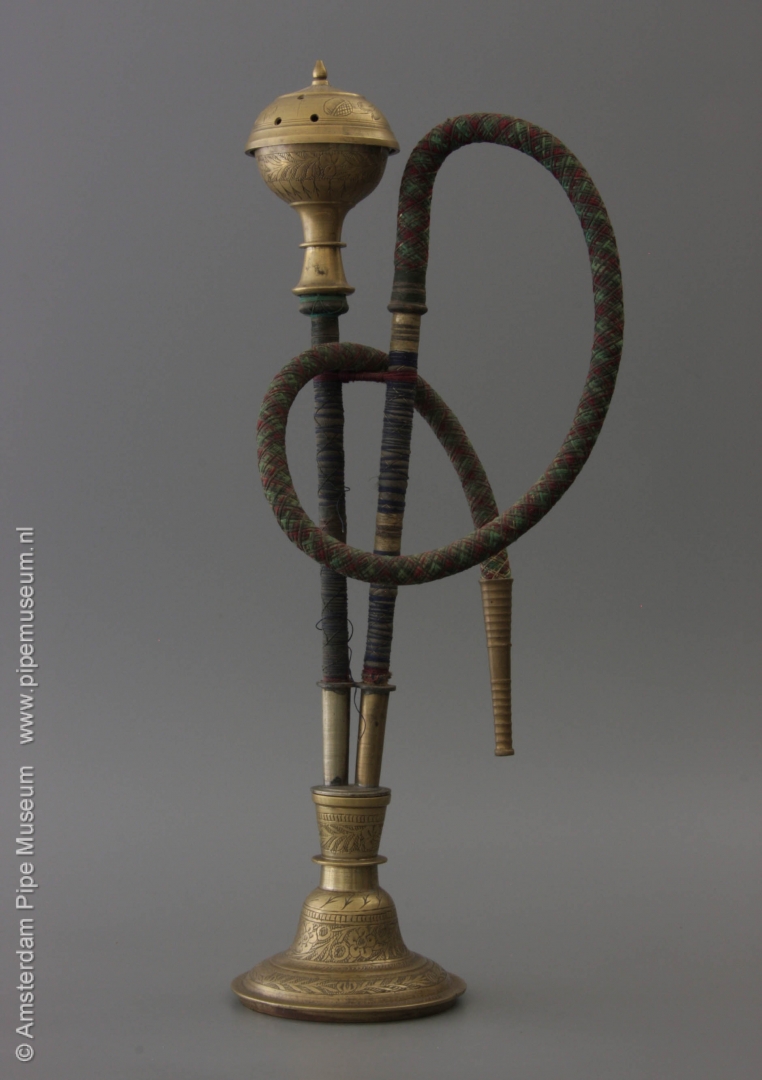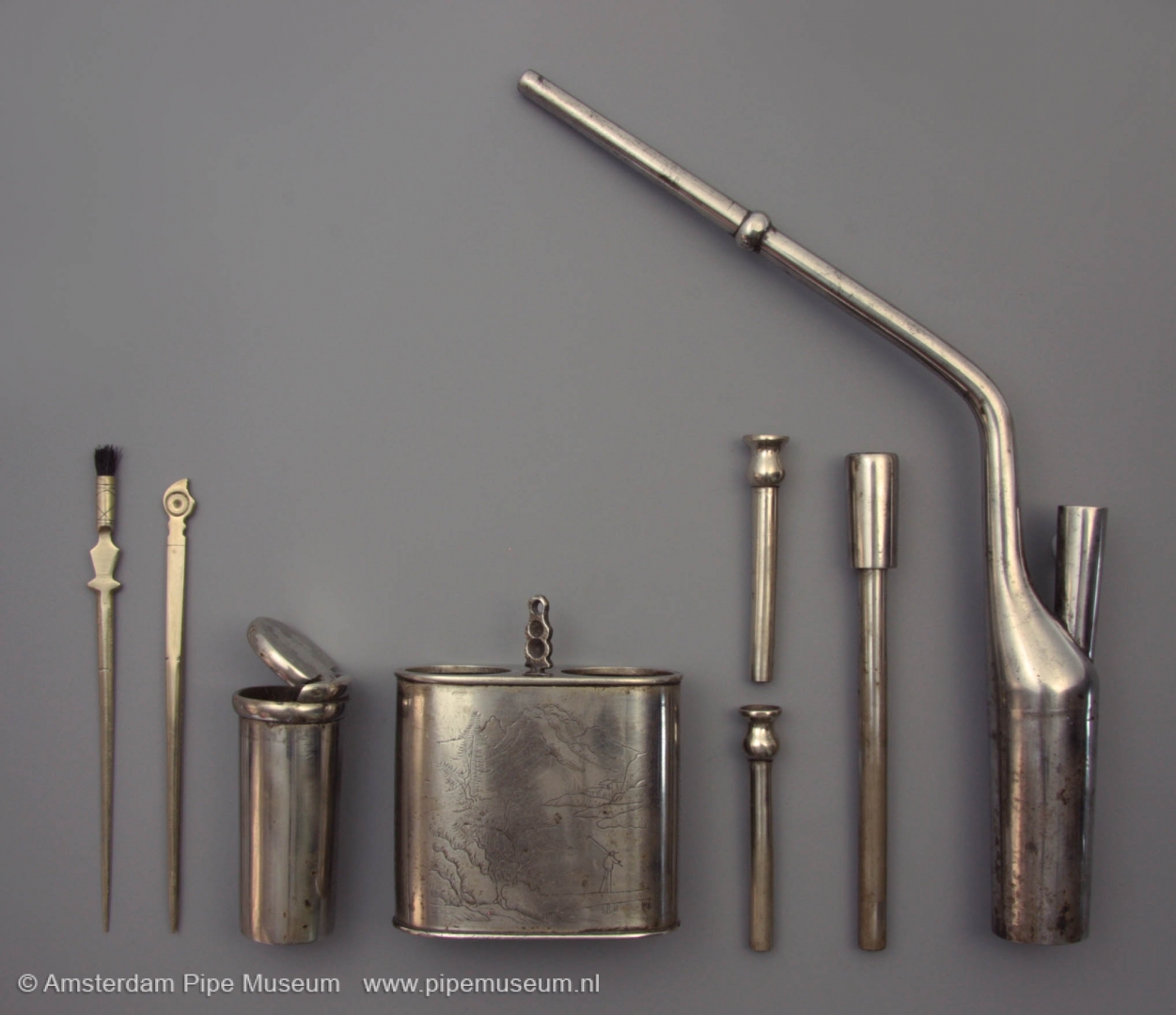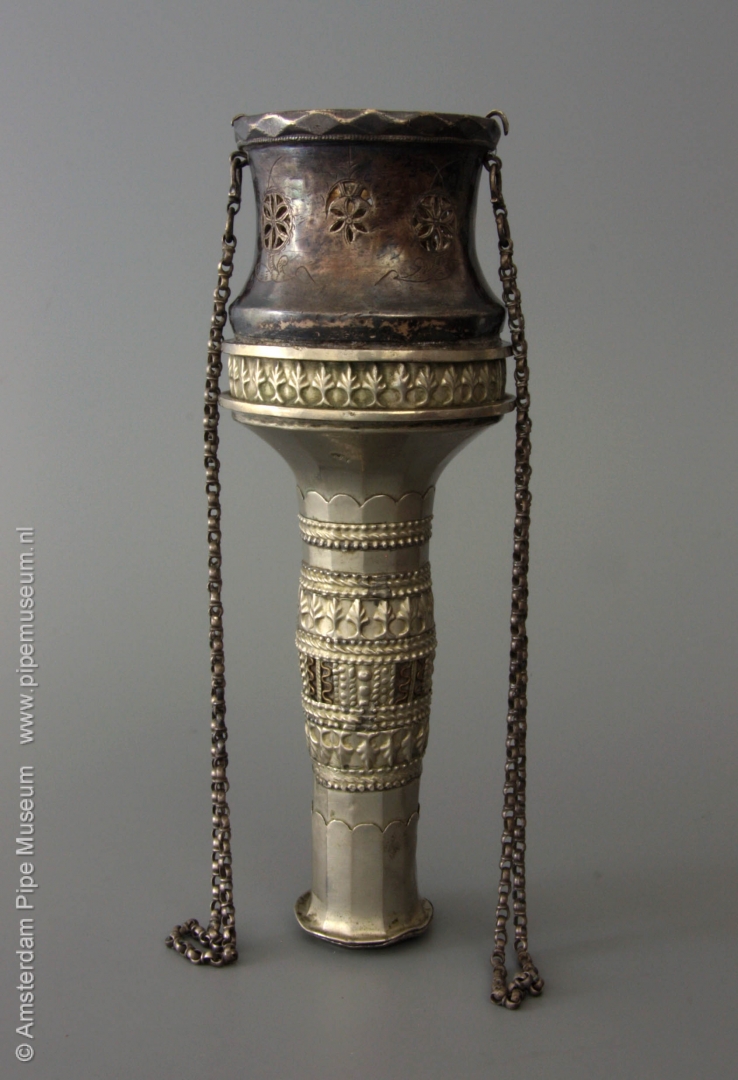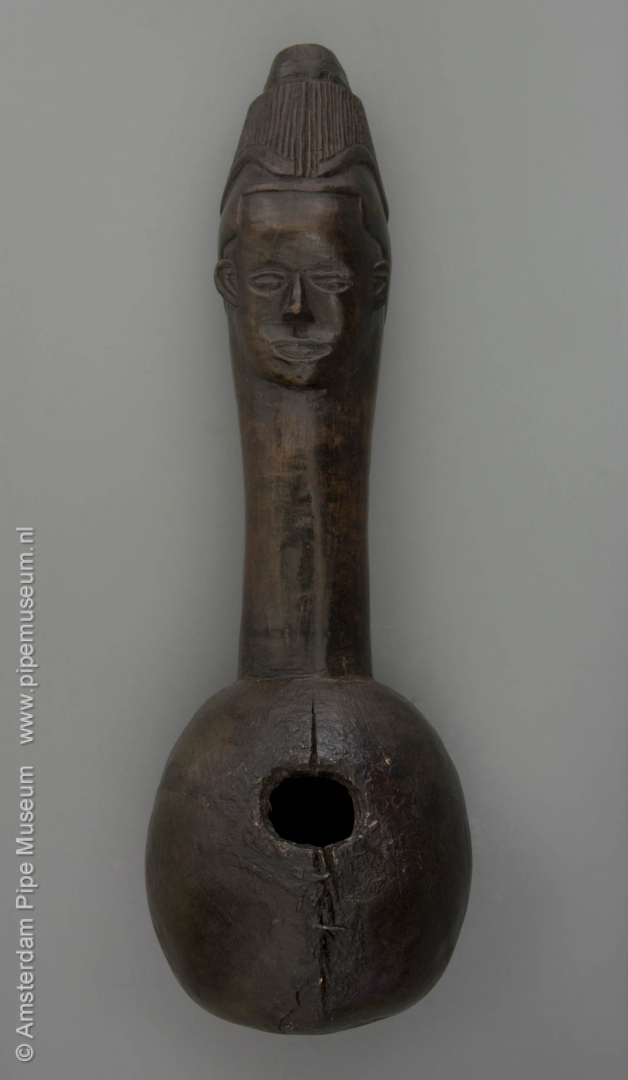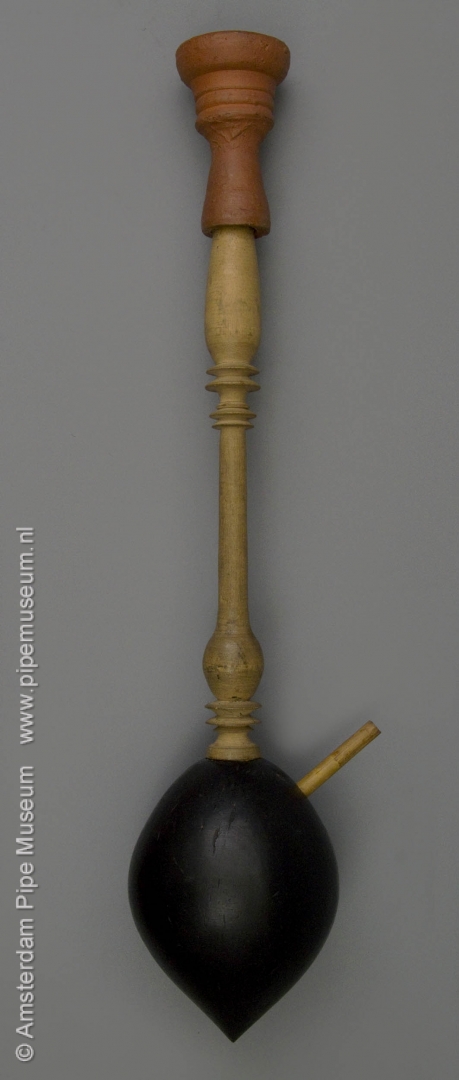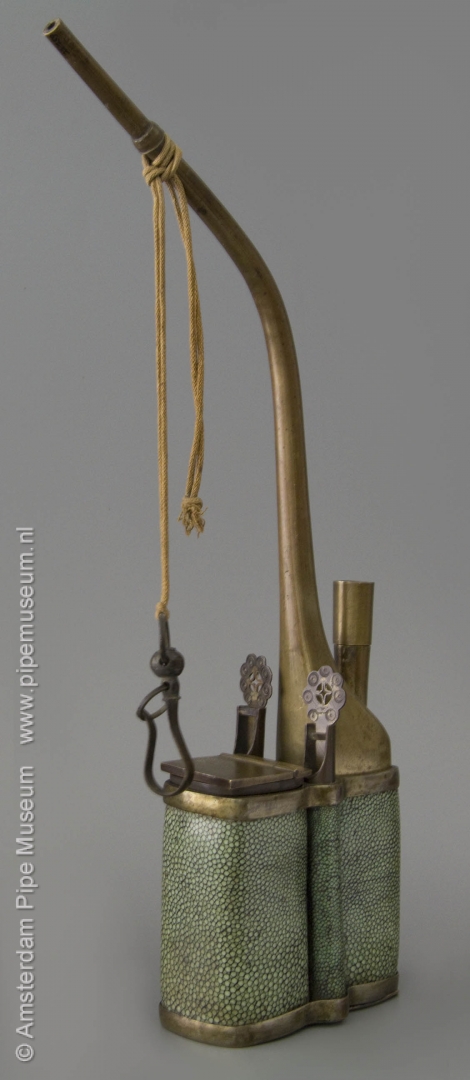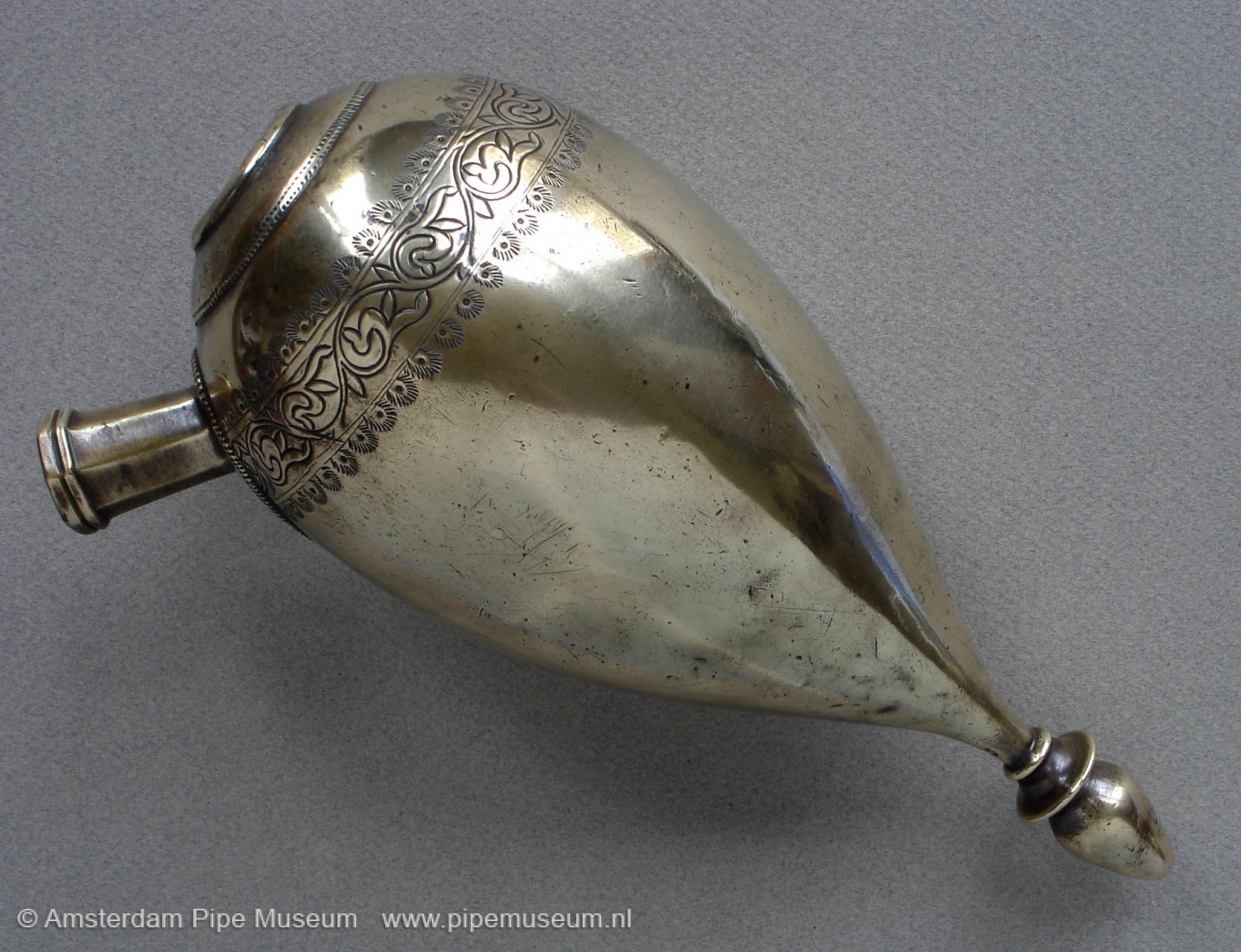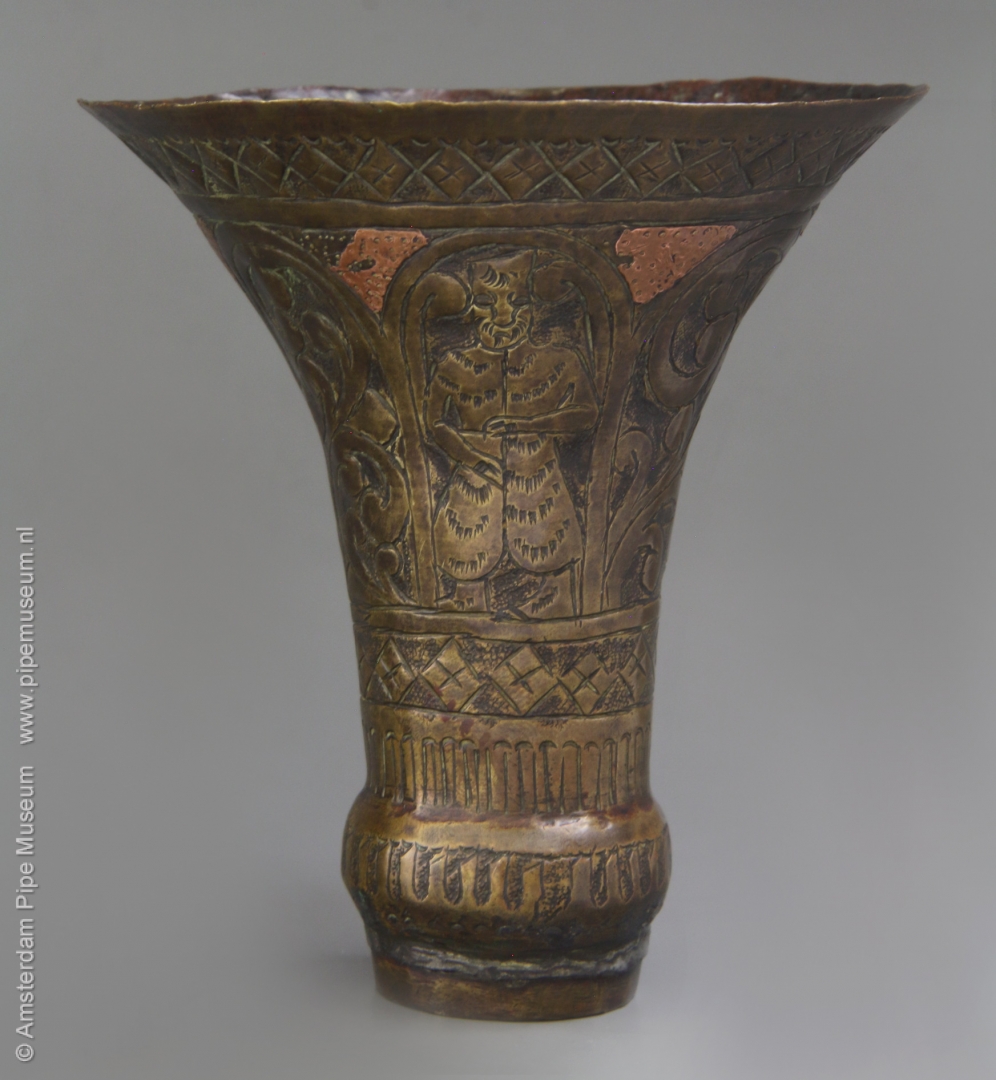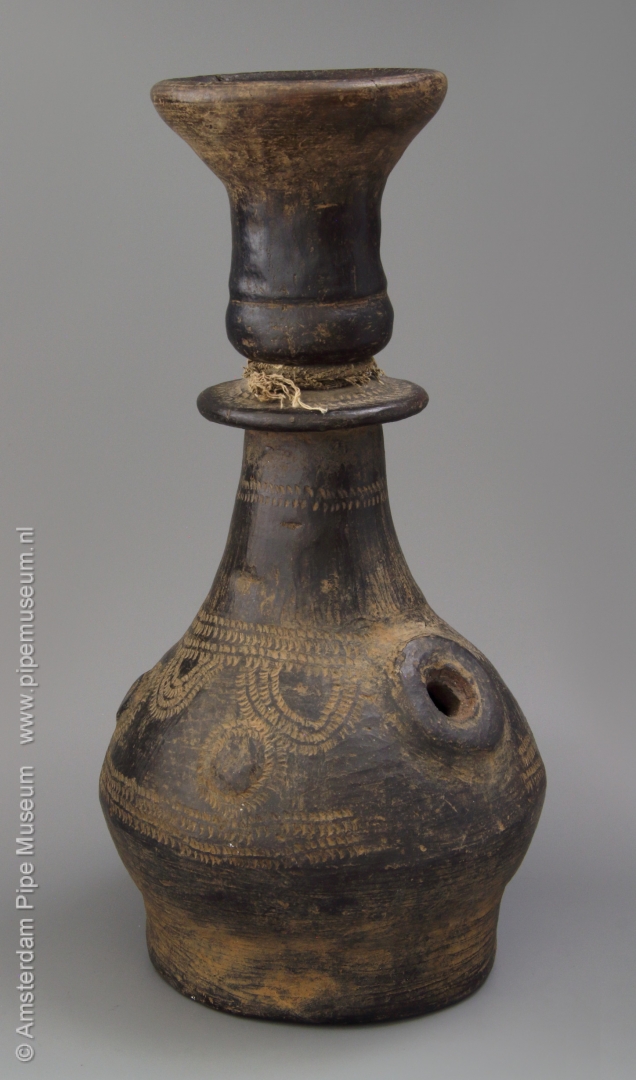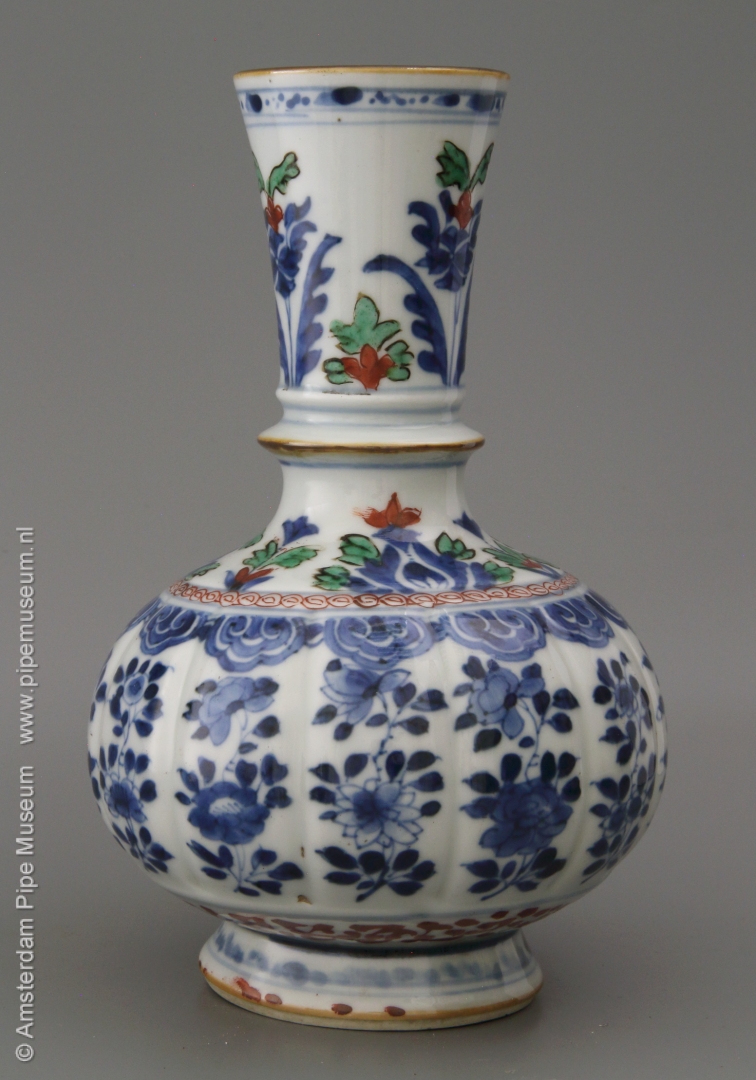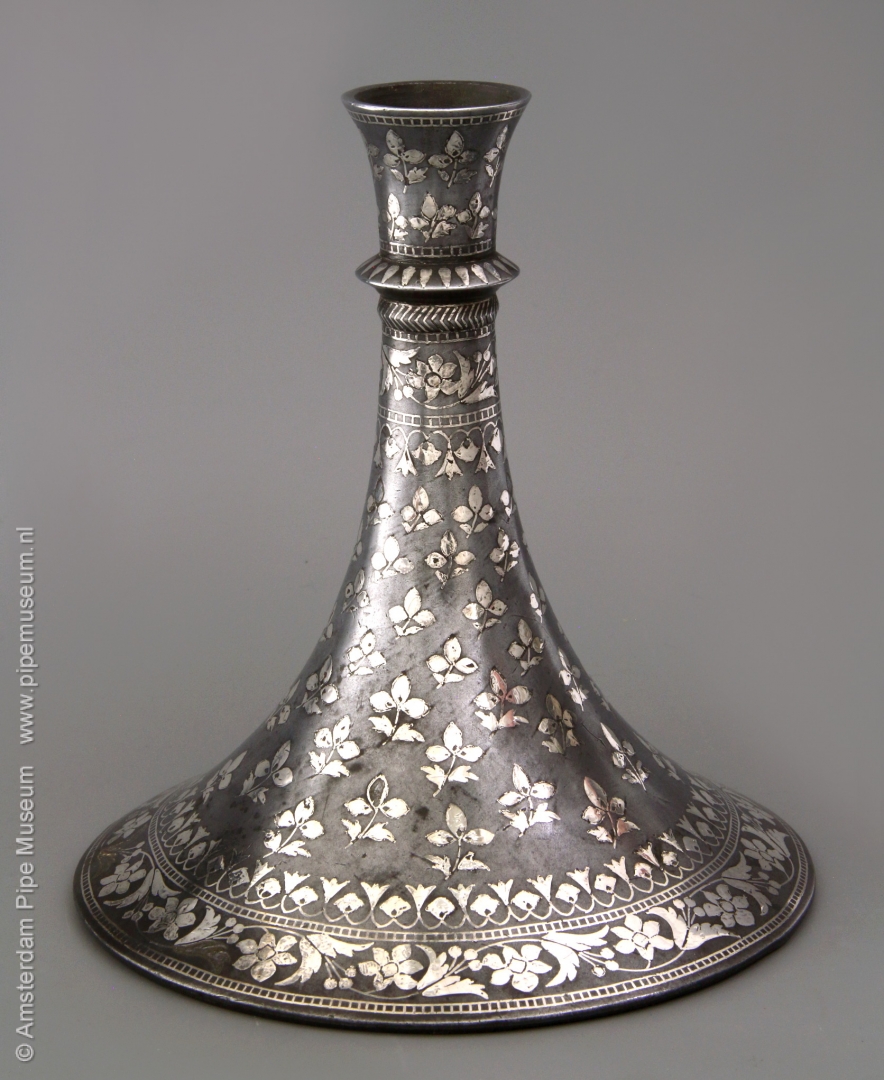Hookahs or hubble the bubbles
The hookah takes a special place among smoking utensils, today it is one of the most popular and is known all over the world. The use of a reservoir filled with water to cool the smoke is an ingenious invention, suited to life in a warm climate. The system is relatively simple. The bowl has a stem that ends in a bottle filled with water. Above this reservoir is a second stem or hose that goes to the smoker's mouth. When drawn from the mouthpiece, it makes a vacuum into the bottle, drawing fresh smoke from the smoldering tobacco through the water.
Hookahs are of Ottoman origin and are known by many names. The Turkish nargileh has a glass reservoir, often colored with beautiful glass-on-glass painting, grinding or a combination thereof. From the nineteenth century, these Bohemian bottles have been sold en masse from Vienna to both Eastern and Western Europe. In Persia where the pipe is called kalian or qalian, as in Russia, the reservoir is often made of metal, standing on a tripod with a stem on the top sometimes of a meter length. The pipe bowl is decorated with colorful enamel.
The British often use the Anglicized Hindi name hookah for the water pipe. These exotic pipes have a bell-shaped water reservoir made of bronze, but can also be beautifully inlaid with silver, the so-called Bidri ware. The simple pipes are based on a coconut, a choice made in many subtropical countries.
From the Arab countries the name shisha became established. The model follows the Turkish habit of glass reservoir. In Africa the water pipe has other expressions. A type of pig bladder reservoir is known from Ethiopia. The Tabwa people from Tanzania, especially the women, smoke from water pipes made of large calabash fruits. This also applies to many other African tribes.
In China there is a water pipe as a travel set, so in a comfortable small size. A holder with both the pipe with curved stem and the tobacco jar with some smoking tools in between. The whole is made of pakton, the Chinese silver with a high nickel content. This is extensively engraved, or in a more luxurious version embellished with colored enamel cloisonné. Many variants are in use in the countries of Southeast Asia. In Vietnam, porcelain storage pots were converted into water pipes. Today, such pipes are copied by the thousands for tourists.
